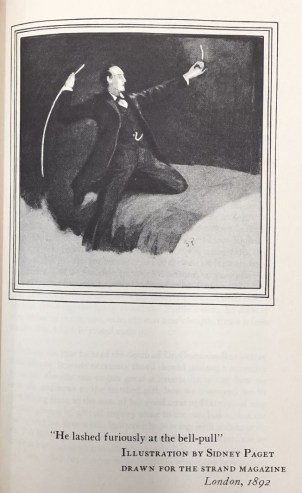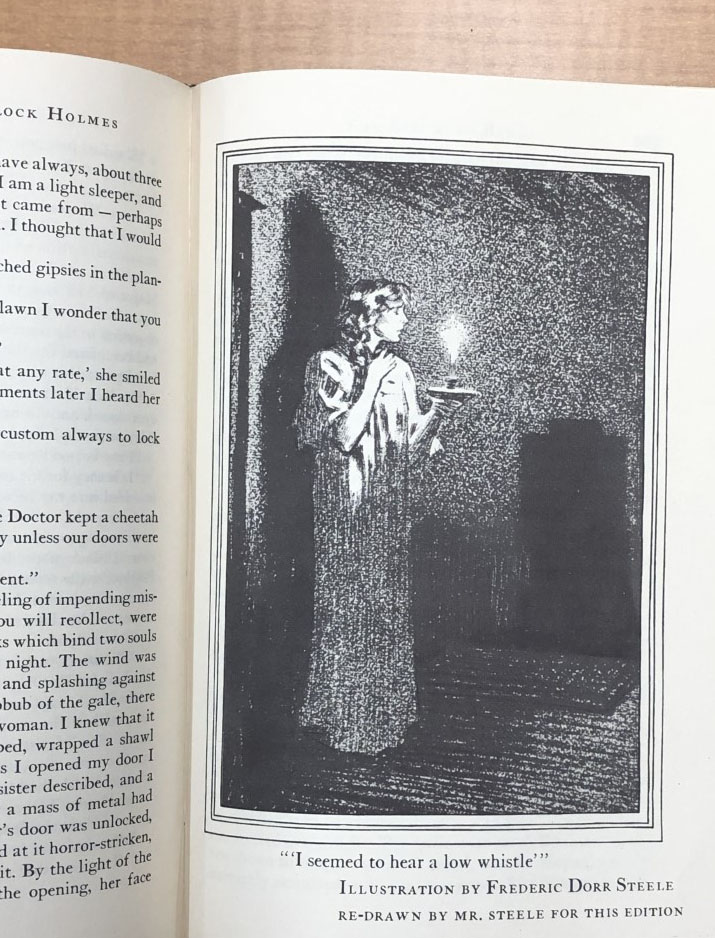This post was written by Colleen Gerrity, Research Services Assistant.
“My name is Sherlock Holmes. It is my business to know what other people do not know.”

Sir Arthur Conan Doyle, The Adventure of the Blue Carbuncle, 1892
When you think of the word detective, who comes to mind? Maybe Agatha Christie’s Hercule Poirot? Edgar Allan Poe’s C. Auguste Dupin? Perhaps even Colombo, Jessica Fletcher, or Inspector Clouseau? There is a good chance one of these names crossed your mind, but there’s an even greater chance the word detective made you think of Sherlock Holmes. Without a doubt, Sherlock Holmes is a name everyone has heard at some point in time. Whether it be from films or television series, or the classic novels and short stories, Sherlock Holmes is a renowned figure in the realm of crime fiction. One could easily argue he is indeed the greatest detective of our time, revolutionizing our perception of mystery and the many detectives who followed in his footsteps.

Special Collections Research Center here at George Mason University is lucky enough to have the complete collection of Sherlock Holmes Detective Stories (PR4621 .S5 1930). We have not just one, but three volumes brimming with exhilarating mystery and adventure, all encased in beautifully detailed book covers and paired with original illustrations.
Sir Arthur Conan Doyle is the brilliant mind behind the world of Sherlock Holmes and his partner Dr. Watson. Born on May 22, 1859 in Edinburgh, Scotland, Conan Doyle began writing the story that started it all at age twenty-seven. He had graduated from medical school six years prior and partly modeled the soon-to-be-famous detective Sherlock Holmes after his university professor, Joseph Bell. Two years later, A Study in Scarlet, was published in Beeton’s Christmas Annual and introduced the world to Holmes and Watson. This innovative and now-classic novel begins on page 2 of Special Collection’s first volume of Sherlock Holmes Detective Stories.

But while the world fell in love with Sherlock Holmes, he was not as favored by Conan Doyle. In fact, Conan Doyle decided to “kill-off” Holmes to free him of the obligation to continue his stories. However, Conan Doyle’s mother begged him not too, and when Holmes’ death was published in 1893, twenty-thousand readers canceled their subscriptions to The Strand Magazine – the home to where Sherlock Holmes short stories were published. Conan Doyle felt that Holmes overshadowed his “finer work.” But soon enough, with a push from the public and monetary need, Conan Doyle was back to writing more Sherlock Holmes stories.

On a more positive note, I would like to conclude with touching upon one of my favorite short stories, The Adventure of the Speckled Band, which can be found on page 396 of the first volume of Sherlock Holmes Detective Stories. This is just one of fifty-six short stories written by Conan Doyle and was adapted to all forms of media. I won’t spoil the story, but I’ll give you an idea: a sister’s dying words were, “The speckled band!” What could that possibly mean? Reading this short story, you join Holmes and Watson on their adventure to uncover the truth and bring forth justice. Are you more of a Dr. Watson – just here for the ride? Or are you more of a Sherlock Holmes – methodically piecing together clues at every moment, hoping to solve the mystery before anyone else can? Stop by and do some reading here at Special Collections and perhaps you’ll find out just why Sherlock Holmes is considered the world’s greatest detective.


Follow Special Collections Research Center on Social Media at our Facebook, Instagram, and Twitter accounts. To search the collections held at Special Collections Research Center, go to our website and browse the finding aids by subject or title. You may also e-mail us at speccoll@gmu.edu or call 703-993-2220 if you would like to schedule an appointment, request materials, or if you have questions. Appointments are not necessary to request and view collections.

